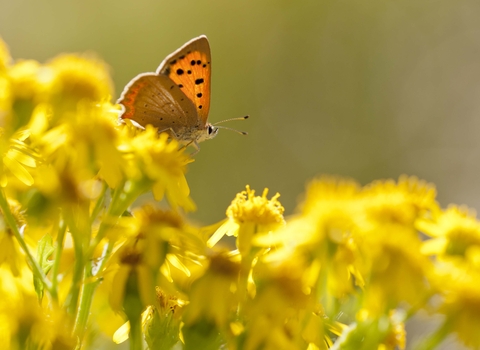©Philip Precey

Small Copper on Ragwort ©Ross Hoddinott/2020VISION
Common ragwort
The yellow flower heads of common ragwort are highly attractive to bees and other insects, including the cinnabar moth.
Scientific name
Senecio jacobaeaWhen to see
June to NovemberSpecies information
Category
Statistics
Height: up to 1mCommon.
